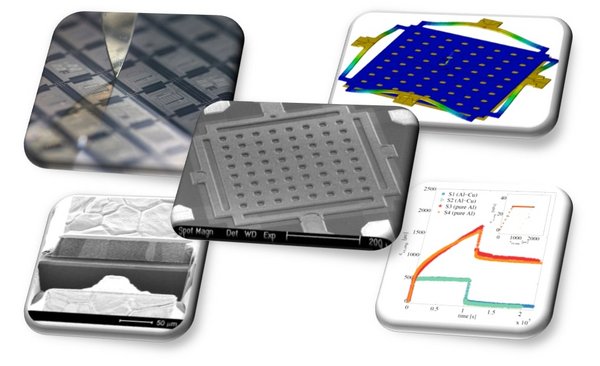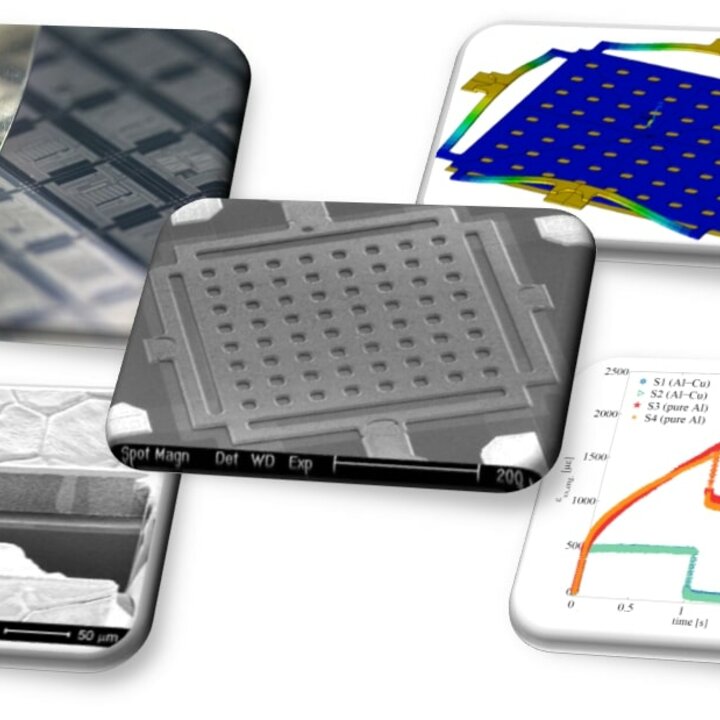
An ongoing trend in industry is miniaturization of component of parts to the scale of micrometers or below. In this regime, the component size becomes comparable to the characteristic length scales in the material’s microstructure, such as the grain of phase size. As a result, the intrinsic material behavior is altered with respect to its bulk counterpart, which can cause huge ‘size effects’ in effective material properties, such as a boost in strength or toughness, thus creating many potential possibilities for industrial applications. Our research introduced multiple dedicated in-situ micro-mechanical testing methodologies to characterize the mechanical behavior of the material in thin films and free-standing membranes with the same micro-fabrication processing history as in the (MEMS) device.
An ongoing trend in industry is miniaturization of component of parts to the scale of micrometers or below. In this regime, the component size becomes comparable to the characteristic length scales in the material’s microstructure, such as the grain of phase size. As a result, the intrinsic material behavior is altered with respect to its bulk counterpart, which can cause huge ‘size effects’ in effective material properties, such as a boost in strength or toughness, thus creating many potential possibilities for industrial applications. Our research introduced multiple dedicated in-situ micro-mechanical testing methodologies to characterize the mechanical behavior of the material in thin films and free-standing membranes with the same micro-fabrication processing history as in the (MEMS) device.
